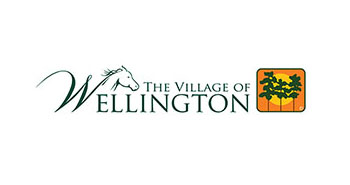Lower-lying land near Wellington’s 12th Fairway neighborhood and portions of Wellington Trace, Greenview Shores Blvd. and Aero Club Drive could figure heavily in a flooding vulnerability assessment underway in the Village of Wellington.
A public workshop at the Wellington Community Center on Wednesday, Jan. 29 marked one step in a process for identifying risks, opening the door to qualifying for potential federal and state grants, and looking for future solutions to deal with the possibility of intensifying storms.
“This particular project is to identify the long-term effects of, I hate to say, but some of the climate change,” Village Engineer Jonathan Reinsvold said.
The money to start the initiative comes from a $200,000 Resilient Florida planning grant from the Florida Department of Environmental Protection, plus another $50,000 in village funds.
Wellington homes typically sit on foundations a given number of feet above sea level, but older neighborhoods may feature roads or adjacent land six inches to a foot below standards now in place, officials explained.
Options to reduce risks could focus on improved drainage, expanded water storage areas within the village, environmental solutions and potentially raising some stretches of roadway, said Diane Quigley, senior project manager with Stantec Consulting Services Inc. That is an engineering, architecture and environmental firm working with the village on the project.
“Our job is to identify areas vulnerable to flooding now and in the future,” Quigley said. “We’re preparing the village for more frequent and intense storms.”
The assessment is designed to look decades into the future, specifically 2050 and 2080, and present information to village residents and leaders in late 2025 and early 2026.
The risk of flooding literally surged to the doorsteps of many Wellington homes in 2012, when Tropical Storm Isaac dumped at least 16 inches of rain on the village. In places, water covered roads and swales and advanced into front yards right up to the front porches of some residences.
“We had to ask permission to open up Pump Station 2,” recalled Bruce Wagner, now the village’s director of public works, who worked in Wellington during that storm and remembers a fair amount of drama focused on a particular pump at the village’s southern end.
Getting the necessary approvals from state and regional authorities to do emergency pumping required diverging from usual protocols concerned with making sure nutrient-rich water from agricultural areas goes through filtering systems and not directly toward the Everglades.
But this became an urgent matter that risked swamping homes.
“It’s like you want to pull the cork out of the bathtub,” Wagner said. “You want to get the water out of there.”
The pumping did work, in the nick of time. In the end, Wellington escaped having a single home declared officially flooded by federal standards, though it disrupted travel, spread debris across a wide area and gave plenty of residents all the taste they wanted of the risks involved.
In recent years, the village has added more acreage that can help store water, from expanded canal areas parallel to Southern Blvd., to the Moncado property supplementing preserve areas on the village’s western end.
“Storage is going to be the number one thing,” Reinsvold said.
Wellington does not have to worry so much about certain flooding issues associated with coastal communities, but it does sit in a “bowl” that requires careful water management, Reinsvold said.
The vulnerability assessment will “result in a list of the village’s most vulnerable assets that need to be improved now, and in the future,” according to documents available at the meeting.








